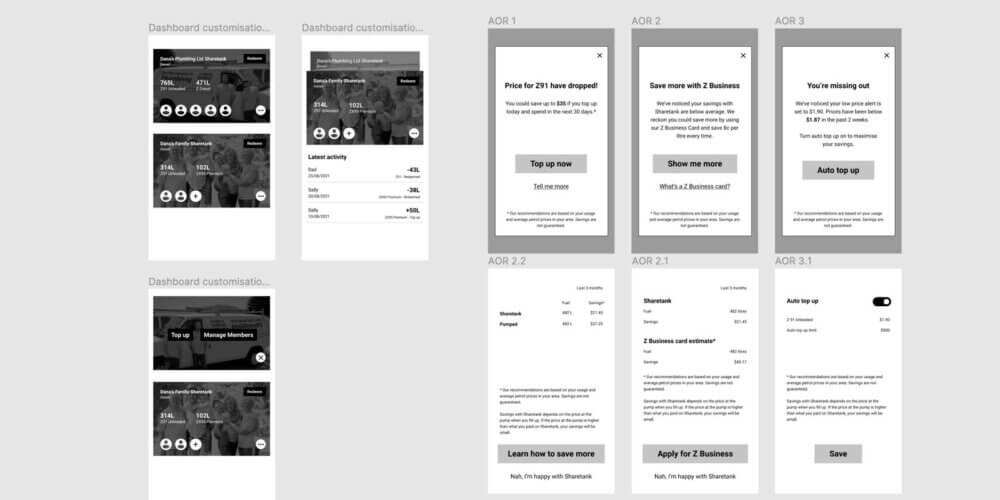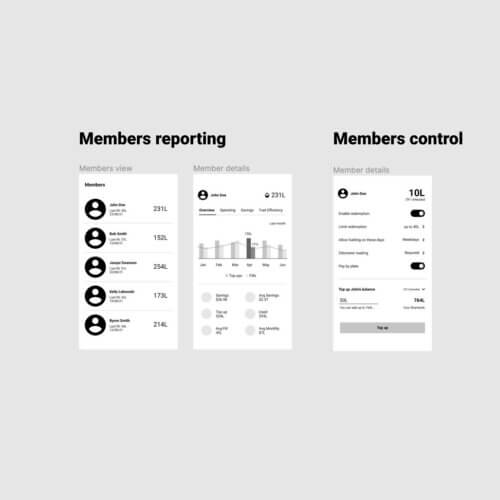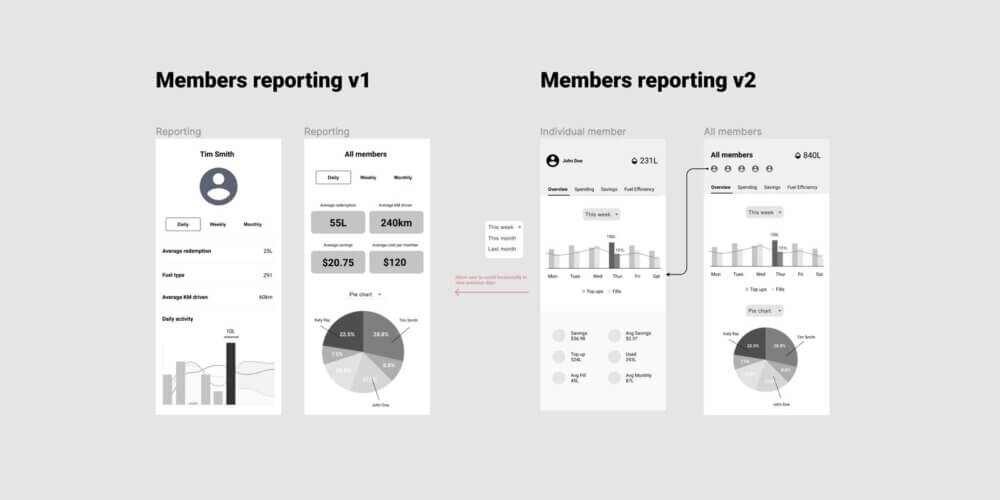Sharetank for SMEs
Company
Z Energy
Responsibilities
- Design Lead
- Customer Research
- UX Design
Tools
- Figma
A world’s first, Sharetank re-imagines how kiwis buy and use fuel.
Sharetank is a virtual fuel tank in Z App that allows customers to pre-buy up to 1,000 litres of fuel at a time and share their balance with up to five people. Sharetank automatically scans the lowest Z pump price within 30 kilometres of their location. Customers can use their balance at any Z station across New Zealand.
In this project, we investigated how small businesses manage their fuel expenditure to discover how we might improve the Sharetank features for this segment.
What's Sharetank?
How might we improve Sharetank for Small Businesses

During the Sharetank MVP trial period, we validated that customers value the concept.
Qualitative research found that Small Businesses who use Sharetank highly value the concept, prompting us to think about how might we enhance functionality to better meet any under-served needs.

1. Opportunity Area and Design Challenge
Creating a clearly defined challenge
A key part of this process is to collate the various suspicions and beliefs into hypotheses, which would then be tested with customers through empathy interviewing.
During a 2-hour workshop, I led the team on finding gaps and opportunities within the small business sector as well as looking into our commercial customers’ behaviours and feedback to understand existing pain points.
One of our hypotheses was: “We believe that using Sharetank will outweigh the costs and benefits of a fuel card for low volume small businesses.”
2. Research & Learn
Engaging with Small Businesses
I developed an empathy interview script based on the five hypotheses that were created in the previous workshop.
Within a week, we conduct a series of empathy interviews with 17 small business owners varying from one to five employees.
Our research findings demonstrated that small business owners use a variety of ways to manage fuel expenditure, from fuel cards to spreadsheets. We validated 3 of 5 hypotheses.
I also led the workshops where our team generated customer needs statements from the interviews and prioritised them according to an insights selector matrix. We prioritised the customer needs that were relevant to our design challenge.





3. Design a Solution
Ideation and concept design
I led a series of ideation workshops simultaneously in 2 locations, where our teams created several “how might we” statements from the customer needs previously identified. We then prioritised three statements that were used to create 9 concept ideas.
From the 9 concepts, four were prioritised through the RICE scoring method.
The four concept ideas were:
- Employee reporting tools (more visibility)
- Always on recommendation (awareness)
- Usage control for employees (more control)
- Dashboard customisation (personalisation)
Design & Prototype
In collaboration with another product designer, we designed several low fidelity wireframes that were tested with some of the previously interviewed customers.
These prototypes allowed us to quickly gather feedback and discard any idea that did not meet their expectations. Some of the ideas suggested we should have simple charts to provide more clarity around fuel usage by members. Users prefered simple bar and pie charts for easy at a glance reporting.
Based on users’ feedback, we iterated and created high fidelity versions.
4. User Testing
Prototype Usability Testing
The purpose of the study was to test the usability and viability of the following features:
- Reporting
- Usage controls
- Customise dashboard
For instance, some of the customise dashboard key findings were:
- Users weren’t confident when differentiating between the two accounts
- “Add image” is not apparent
- Consider allowing users to add a logo to their business account
- Swiping gesture was generally well understood – but not enough to differentiate the two accounts
- Users expected the cards to be interactable
5. Parked
Priorities changes
Unfortunately, this project was deprioritised by the business, therefore, we did not proceed with further iterations and build.
However, we validated that there was a strong demand for small businesses to digitise the management of business fuel expenditure, as well as to have better control and visibility of employees fuelling needs.




